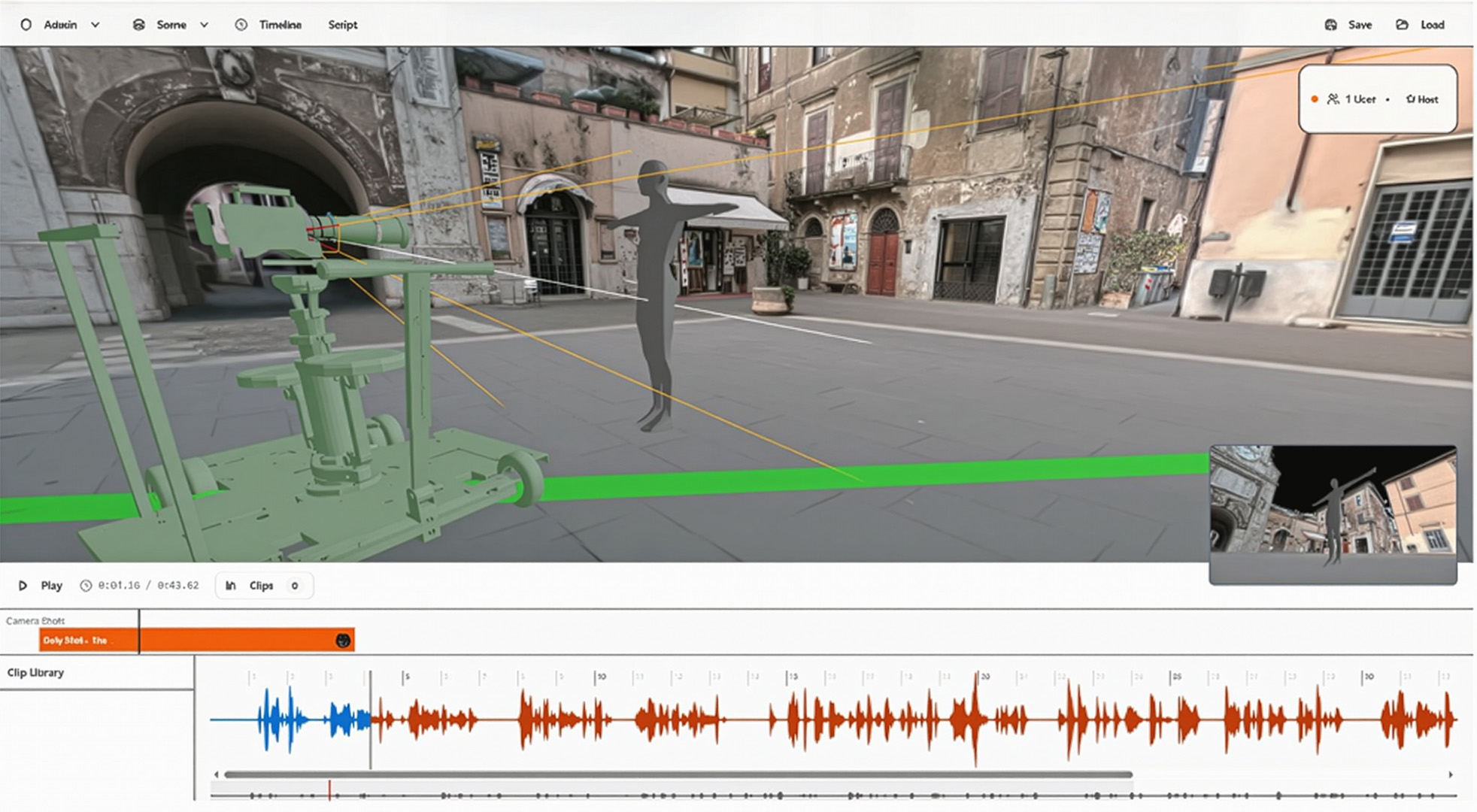Lightcraft Technology, the company behind the Jetset virtual production tool which we reported (and shot a video interview) about before, has announced Spark, a browser-based filmmaking platform that the company claims will solve “some of Hollywood’s biggest issues.” The platform, scheduled for release in 2026, represents another entry in the increasingly crowded field of companies promising to revolutionize film production through AI integration.
CEO Eliot Mack frames Spark as a solution to what he describes as filmmaking’s “traditional obstacles” – funding, approvals, location scouting, and scheduling. However, these challenges are fundamentally business and logistical issues that have persisted throughout Hollywood’s history, raising questions about whether a software platform can meaningfully address problems that are often rooted in industry economics and human relationships rather than technical limitations.
Bold claims meet familiar challenges
The company’s assertion that Spark will allow teams to “harness the power of AI, 3D and traditional filmmaking live in the browser” echoes similar promises made by numerous other platforms in recent years, as the film industry grapples with integrating artificial intelligence tools into established workflows.
Sparks technical ambitions and market realities
Spark’s four-component architecture attempts to cover the entire production pipeline through browser-based tools, each targeting specific industry pain points:
Spark Shot positions itself as a “browser-based interactive scene assembly tool” that combines 3D scans, USD models, animation, audio, AI tools, and camera simulations. The company describes this as allowing filmmakers to “virtually pre-shoot” their films and iterate scenes in real-time through web browsers.
Spark Live attempts to unify project communications by linking voice, video, chat, “push-to-talk,” and 3D interactions directly to specific shots or assets. While integrating with external platforms like Zoom, it also provides internal communication systems designed to keep distributed teams coordinated. The success of such platforms often depends on adoption across entire production teams – a significant hurdle in an industry where communication workflows are deeply embedded in existing practices.
Spark Atlas is described as “the first artist-centric database” built on open-source systems, offering encrypted security for production elements from 3D files to EXR sequences. Its key differentiator appears to be script-parsing capability that connects every project element to associated scenes or dialogue. While centralized asset management is a genuine industry need, numerous existing solutions already address these challenges, raising questions about what makes Atlas sufficiently different to justify workflow migration.
An existing solution that comes to mind which follows a similar approach is PRODUCER Maker Machina, which we’ve reported about several times before.

Spark Forge tackles post-production coordination through timeline-based interfaces that build on Jetset’s metadata and OpenTimelineIO exports. The system promises to automate traditionally labor-intensive VFX tasks including tracking, shot building, and compositing, while generating application-specific scripts for tools like Blender, Unreal Engine, Nuke, Maya, Fusion, and SynthEyes. The company claims it can process hundreds of “slap comps” in hours through its “shot factory” approach.
While the technical specifications sound comprehensive, the film industry has seen numerous ambitious platforms struggle with the reality of production demands. The promise of replacing or supplementing industry-standard tools through browser-based alternatives faces the inherent limitations of web-based apps and the deeply entrenched workflows that have developed around desktop applications.
Lightcraft’s claim that Spark Shot can transform shooting “from a massively expensive, once-in-a-lifetime endeavor, into something you can do anytime, anywhere” may oversimplify the complex factors that drive production costs, including talent, locations, equipment, and the fundamental creative process itself.
AI integration without clear differentiation
The company states that Spark can handle “as much or as little AI as needed for the project,” but provides limited specifics about how its AI implementation differs from existing tools already available to filmmakers. As AI features become increasingly common across creative software platforms, the competitive advantage of AI integration alone has diminished.
The timing of Spark’s announcement coincides with ongoing industry debates about AI’s role in filmmaking, particularly around labor displacement concerns that have been central to recent strikes and negotiations.
Who is the competition of Lightcraft Spark?
Lightcraft enters a market that includes established players like Autodesk, Epic Games, and Adobe, as well as newer companies like Runway and Wonder Dynamics, all vying for filmmakers’ attention with AI-powered tools. The company’s track record with Jetset, provides some credibility, though success with one product doesn’t guarantee market acceptance of a broader platform.
The browser-based approach could offer accessibility advantages for remote collaboration, particularly relevant in post-pandemic production environments. However, it also faces the challenge of convincing professionals to migrate from established desktop workflows to web-based alternatives.
Preview at SIGGRAPH 2025 in Vancouver
Lightcraft is currently demonstrating Spark at SIGGRAPH 2025, where industry professionals have their first opportunity to evaluate whether the platform’s capabilities match its ambitious marketing claims. The film industry has historically been cautious about adopting new technologies that promise to fundamentally alter established workflows.
The company’s positioning of Spark as a tool for both major studios seeking cost savings and independent filmmakers looking to secure funding reflects an attempt to capture multiple market segments simultaneously – a strategy that often results in platforms that serve neither audience particularly well.
With a 2026 release timeline, Lightcraft has given itself considerable runway to deliver on its promises. We’ll follow its development and will keep you posted.
What’s your take on a platform like Lightcraft Spark? Would you use it for your productions? Let us know in the comments.
